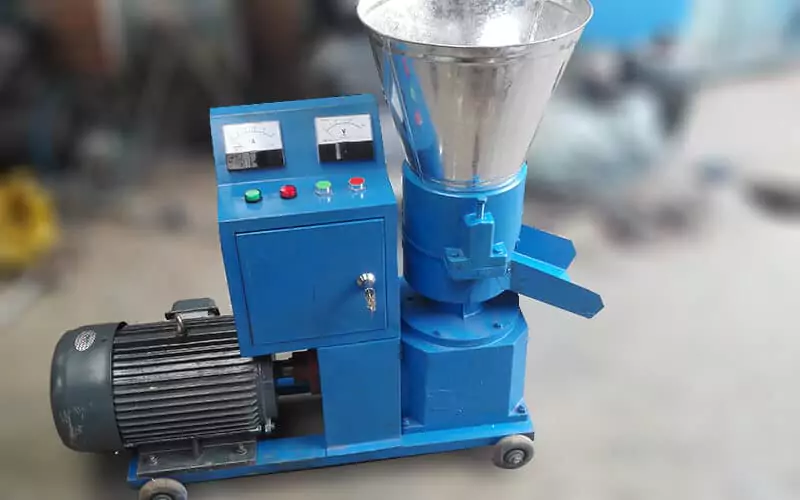
| Price | 500-5000USD |
| Delivery Time | 10-15 days |
| Available | In Stock |
| Package | In Free Fumigation Wood Box |
| Guarantee | 1 Year |
| Shipping | By Sea or By Air |
| Payment Method | Wire Transfer or Western Union |
| Brand | Victor |
Flat Die Pellet Mill Overview
| Production Output | 0.1-2 t/h |
| Power | Electric motor or diesel engine |
| Voltage | 110-415V |
| Raw Materials | Cereal, corn, wheat, barley flour, soybean, oil seed meal/cake, edible leaf, fish meal, bone powder, etc |
| Type | flat die type |
| Final product size | 3-10 mm |
| Application | feed pellet production, feed pellet industry |
| Used For | animal feed, poultry feed, sinking fish feed |
Technical Comparison: Diesel vs Electric Flat Die Pellet Mill
diesel flat die pellet mill
| Model | Diesel Engine Power(HP) | Output(kg/h) | Weight(kg) |
| VTKLP-125 | 4 | 50-80 | 100 |
| VTKLP-150 | 5 | 100-150 | 150 |
| VTKLP-210 | 10 | 200-400 | 260 |
| VTKLP-230 | 15 | 300-500 | 350 |
| VTKLP-260 | 20 | 500-700 | 420 |
| VTKLP-300 | 25 | 700-900 | 650 |
| VTKLP-360 | 30 | 900-1200 | 900 |
| VTKLP-400 | 40-50 | 1200-1500 | 1200 |
electric flat die pellet mill
| Model | Electric Power(kw) | Output(kg/h) | Weight(kg) |
| VTKLP-125 | 3 | 50-80 | 80 |
| VTKLP-150 | 4 | 100-150 | 110 |
| VTKLP-210 | 7.5 | 200-400 | 210 |
| VTKLP-230 | 11 | 300-500 | 280 |
| VTKLP-260 | 15 | 500-700 | 300 |
| VTKLP-300 | 18.5 | 700-900 | 500 |
| VTKLP-360 | 22 | 900-1200 | 700 |
| VTKLP-400 | 30-37 | 1200-1500 | 900 |
working video of flat die pellet machine
A Simple Guide for Small-Scale Production
Do you have a small farm, a homestead, or a workshop? Do you want to find a way to turn your own raw materials into useful pellets? You probably don’t need a big, expensive machine for your business. You need a solution that works and doesn’t cost too much. This is where the flat die pellet mill comes in.
It’s the machine that makes the most pellets for small-scale production all over the world. This guide will explain in simple terms what a flat die pellet mill is. We’ll talk about how it works, what it’s good for, and how to choose the best one for you.
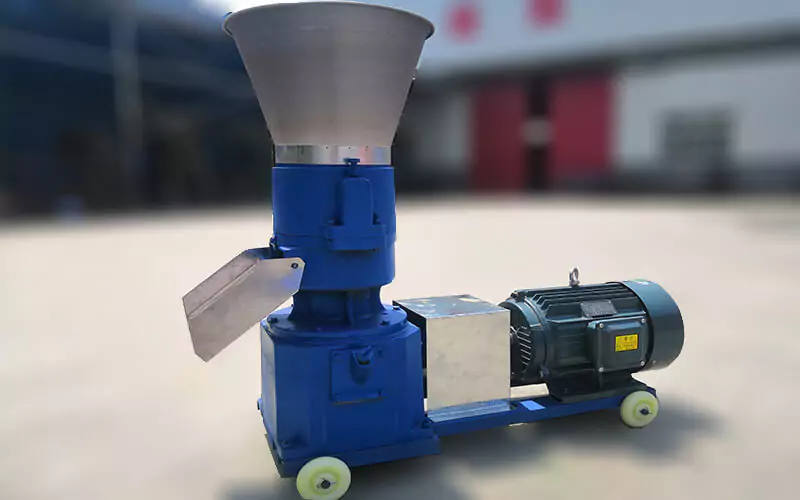

What is a Flat Die Pellet Mill?
A flat die pellet mill is a machine that makes pellets. It has a flat, round plate with holes in it (the die) and heavy rollers. When you put these parts together, they turn ground material into pellets. It’s like a cookie press, but it’s made for heavy-duty industrial use. But it was made to be food or fuel for animals.
The main job of this machine is to make it easy and safe to make pellets. It’s a good deal for businesses that are small to medium-sized. The simple, direct-pressure design works well. Also, it’s easier to deal with when there are fewer pieces of material.
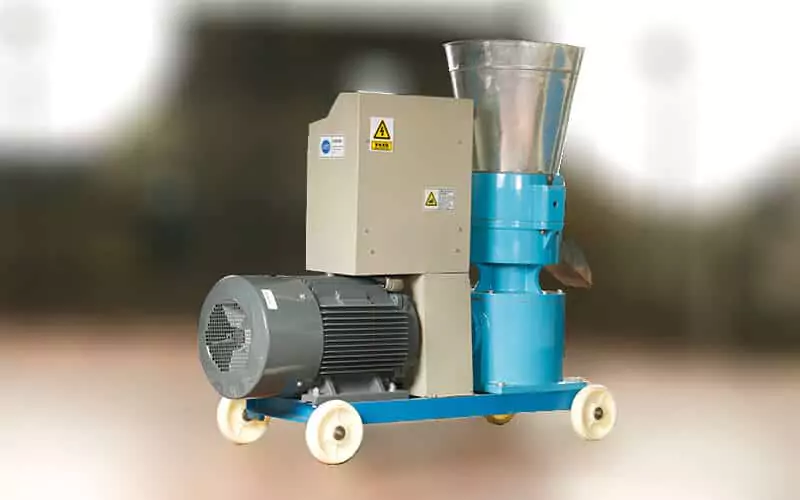
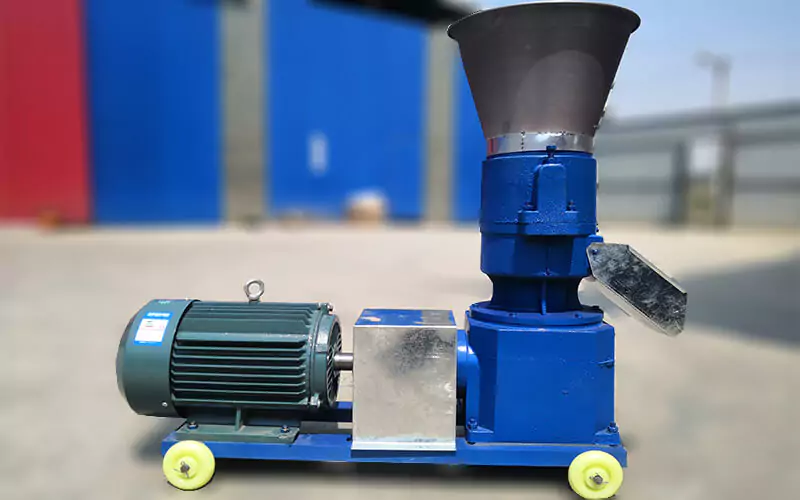
How Does It Work? A Look at the Simple Design
The flat die pellet mill has a straightforward design that is easy to understand.
The Flat Die (The Shaper)
The die is a heavy, flat metal disc that is the heart of the machine. There are a lot of little, straight holes in this disc. These holes are what give your pellets their shape. The size of the holes determines how big your pellets will be.
The Rollers (The Press)
There are one or more heavy steel rollers on top of the flat die. These rollers spin and move over the die’s surface when you turn on the machine.
The Pressing Action
You put the stuff you want to grind into the mill’s top. It falls down onto the flat die. Then the rollers that move push down very hard. This pressure pushes the material through the holes in the die. This makes the pellets at the bottom of the die.
Two Main Designs: Die-Rotating vs. Roller-Rotating
You might see this design in two different ways. In some models, the die spins and the rollers don’t move. In some models, the rollers go over a die that doesn’t move. Both designs use the same basic idea: pushing down to make pellets.

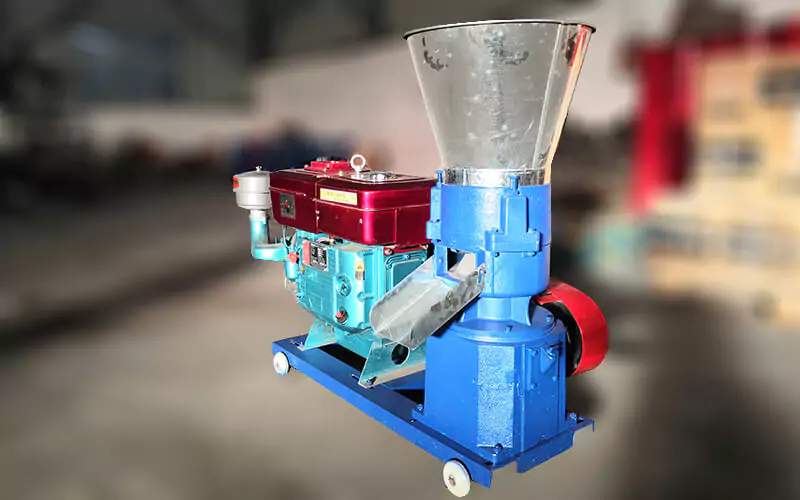
What Are the Main Advantages of a Flat Die Mill?
Farmers and small business owners choose flat die mills for several good reasons.
More Affordable Price
Most of the time, they are much cheaper than bigger, more complicated ring die mills. This makes it easier for small businesses and people to get started with them.
Simpler Design & Easier Maintenance
There are fewer parts that are hard to understand. This means that there are fewer ways for things to go wrong. A lot of owners can do regular maintenance on their own. They don’t always need a technician who is an expert in their field.
Good for Softer, Lighter Materials
The downward force design of a flat die mill is great for making pellets out of lighter, more fibrous materials. This includes a lot of animal feed recipes, as well as hay, straw, and grass.
Available in Smaller, More Compact Sizes
You can get small flat die models that work well in barns or workshops with limited space. They are a good choice for farms because of this.


What Can You Make with a Flat Die Pellet Mill?
A flat die pellet mill is a versatile machine that can be used to make many different products.
- Animal & Poultry Feed: This is a very common use. They are great for making feed pellets for chickens, rabbits, goats, cattle, and fish on a small farm.
- Wood & Biomass Fuel Pellets: You can make your own heating fuel. Common materials include sawdust, wood shavings, grass, or straw for use in a pellet stove.
- Animal Bedding Pellets: These machines can turn materials like straw or sawdust into super-absorbent animal bedding.
- Organic Fertilizer Pellets: They are also used for making pelleted organic fertilizers from materials like compost or manure.
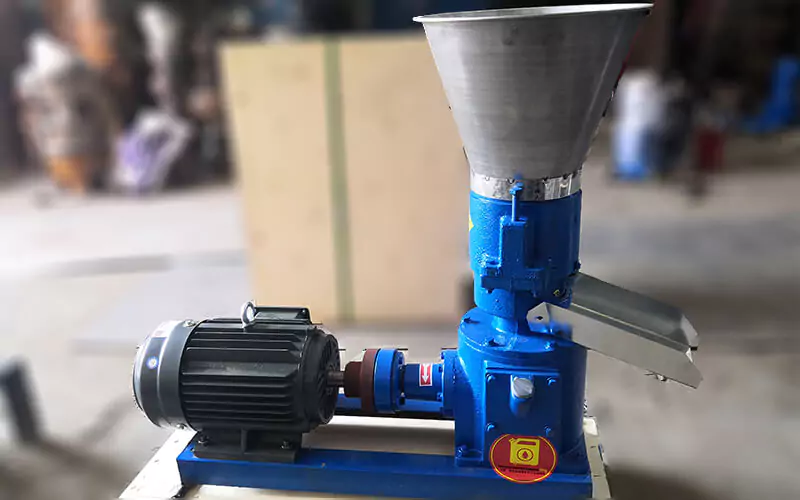
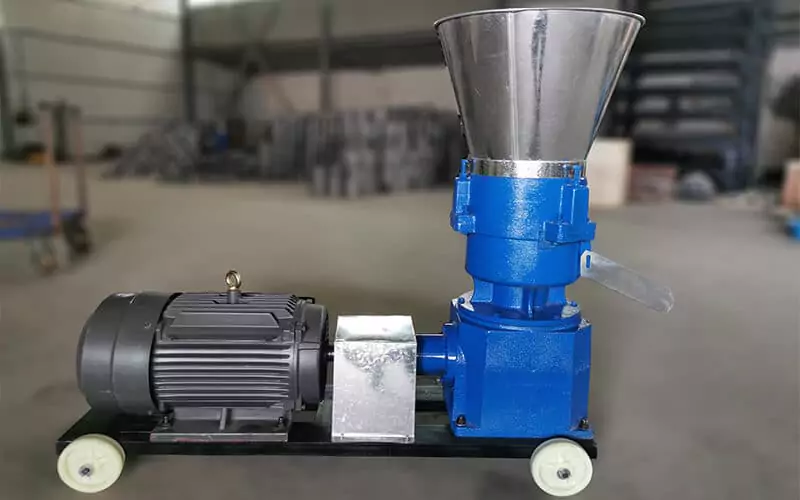
A Quick Comparison: Flat Die vs. Ring Die.
When it comes to choosing a pellet mill, the biggest decision is based on your scale of production. Below are the simple difference, you can learn the detail difference between flat die and ring die:
- Scale of Use: A flat die mill is for small-to-medium scale work. Its output is measured in kilograms per hour. A ring die mill is for large, industrial scale work. Its output is measured in tons per hour.
- Cost: A flat die mill has a lower initial cost. It is more affordable for individuals and small businesses. A ring die mill has a much higher initial cost.
- Best Application: A flat die mill is great for on-farm use, small businesses, and workshops. A ring die mill is for commercial factories that need to run continuously.
How to Choose the Right Flat Die Pellet Mill
Here are some key questions to ask yourself to help you choose the right machine.
What material will you be pelleting?
Think about what you really need. Do you use soft feed ingredients or harder ones like grass or wood? For harder materials, you might need a more powerful machine.
How many pellets do you need to make?
Choose a capacity (in kg/h) that works for you. It’s usually best to choose a machine that can make a little more than you need at the moment.
What is your power source?
Is the power supply you have for an electric motor the right one? Many farm machines need three-phase power. If not, you might need a model with a diesel engine or one that runs on the tractor’s power take-off (PTO).
Check the Quality of the Die and Rollers.
These are the most important parts of the machine. They do all the hard work. It is important that they are made of a strong, heat-treated alloy steel. This will help them last longer.
Conclusion
The flat die pellet mill is a great, low-cost way to make small amounts of pellets. It works well for homes, farms, and small businesses. It is a useful tool for turning raw materials like feed ingredients or biomass into valuable pellets because it is easy to use.
FAQ About Flat Die Pellet Mill
What’s the main difference in how a flat die and ring die mill work?
A: In a flat die mill, heavy rollers push material down through a flat plate with holes that stays still. In a ring die mill, rollers on the inside of a spinning, ring-shaped plate push material out through the holes.
Can a flat die mill make high-quality wood pellets?
A: Yes, a good flat die mill can make very good pellets, especially from softwoods like pine. But if you need to make a lot of hardwood pellets all the time, a ring die mill is usually better.
What is the most important thing for making good pellets with a flat die mill?
A: The most important thing for a pellet mill is to get the raw materials ready. It is important to grind the material down to a small, even size. Most importantly, it needs to have the right amount of moisture, which is usually between 10 and 15 percent.
Do I still need a grinder if I buy a flat die pellet mill?
A: Yes, almost always. You can’t just put big things like wood chips or long hay into the mill and have to first grind them down to a smaller, even size. You will also need a different machine, like a hammer mill, to do this.
Are flat die pellet mills hard to maintain?
A: They are usually easier to take care of than big ring die mills because of how they are made. You should check and change the space between the rollers and the die on a regular basis. You also need to clean the holes in the die and follow the schedule for lubricating it. Many owners can do most of the maintenance themselves because it is easier.
